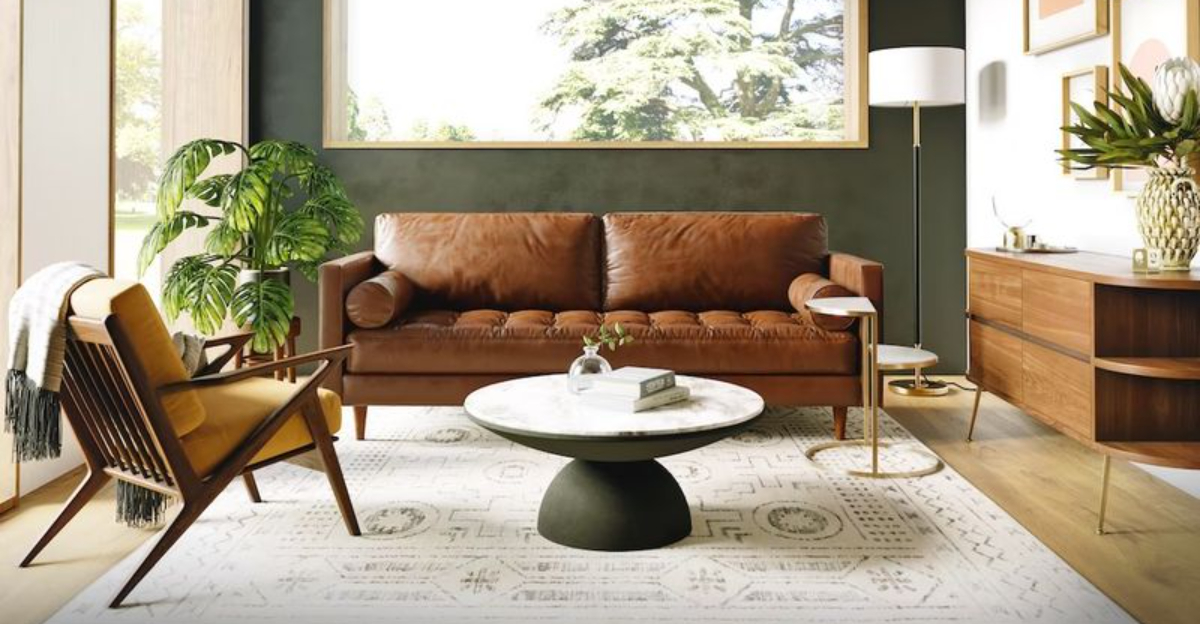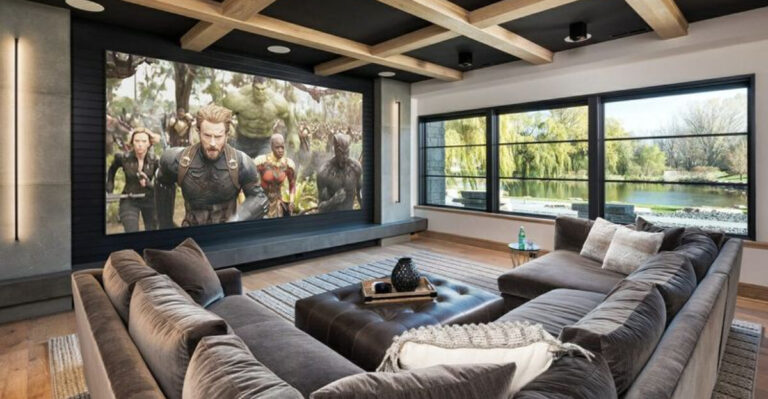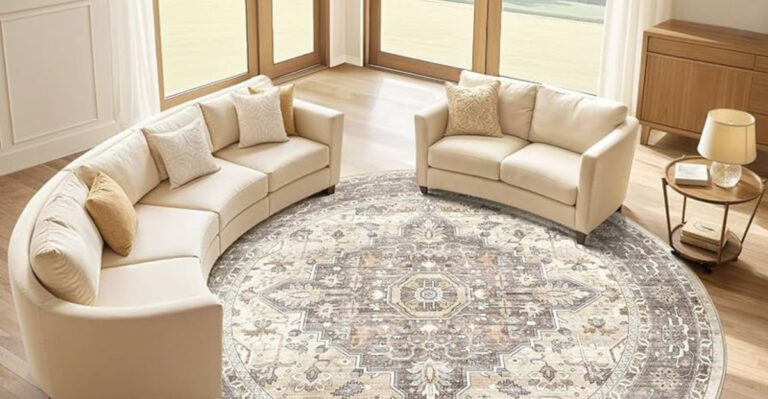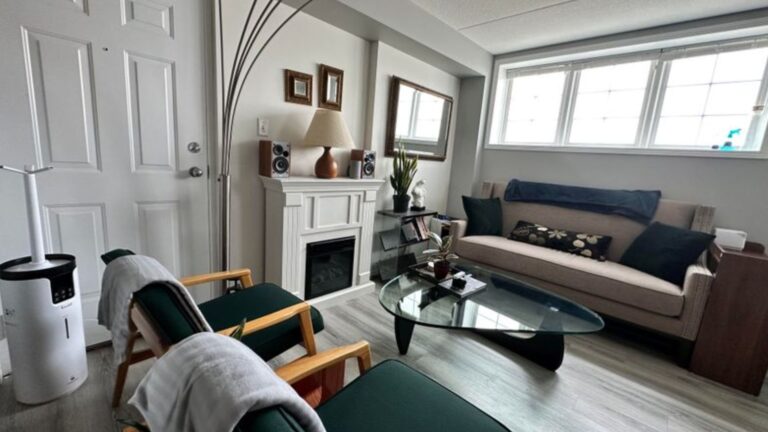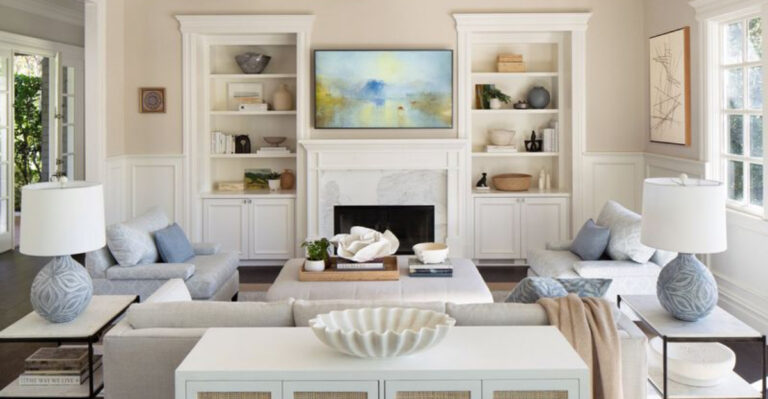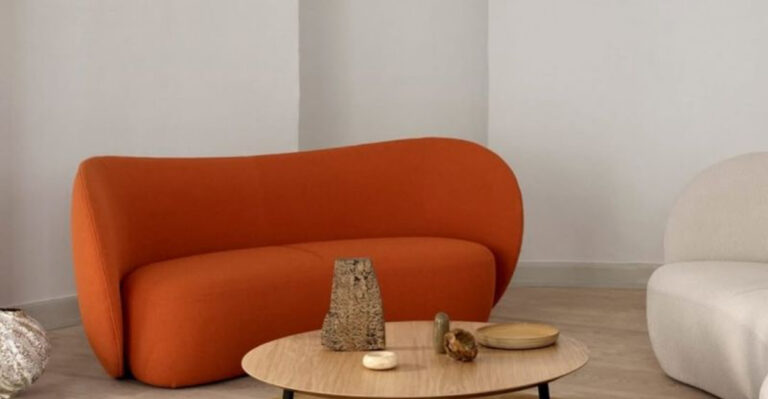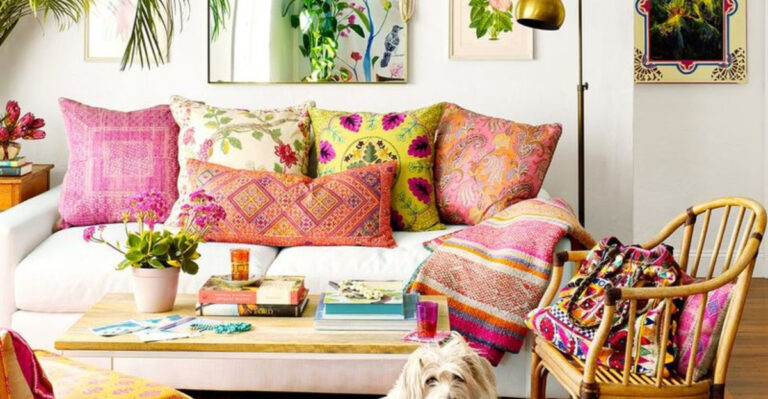18 Living Room Designs From The 1950s That Look So Modern Today
I’ve always loved flipping through old family photos, and the 1950s living rooms in the background? Surprisingly stylish. Between the sleek lines, funky furniture, and space-age charm, it’s wild how much of it still works today.
That era gave us more than just jukeboxes and TV dinners, it shaped the way we think about layout and design. The atomic age had this weirdly perfect mix of optimism and practicality, and somehow, it still feels fresh.
If you’ve ever thought vintage was too dated for modern homes, these ‘50s living room ideas might just change your mind.
1. Conversation Pit Layouts
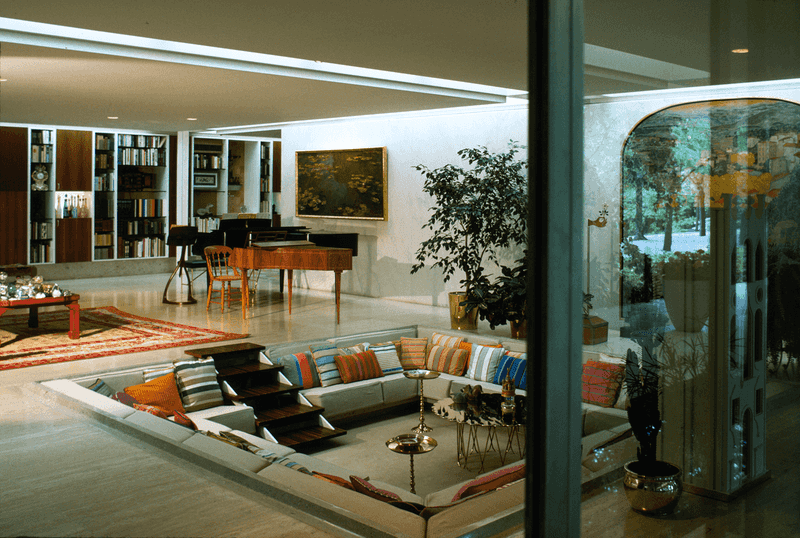
Sunken seating areas were the party hotspot of fancy 1950s homes. These cozy floor-level lounges encouraged face-to-face chats long before smartphones made us all zombies.
Forward-thinking homeowners built these conversation pits with built-in sofas forming a square or circle, often surrounding a central coffee table or fireplace. The setup practically forced people to interact!
Today’s open-concept living spaces have rediscovered this genius arrangement, with many high-end homes incorporating modern versions of these social hubs.
2. Floating Credenzas
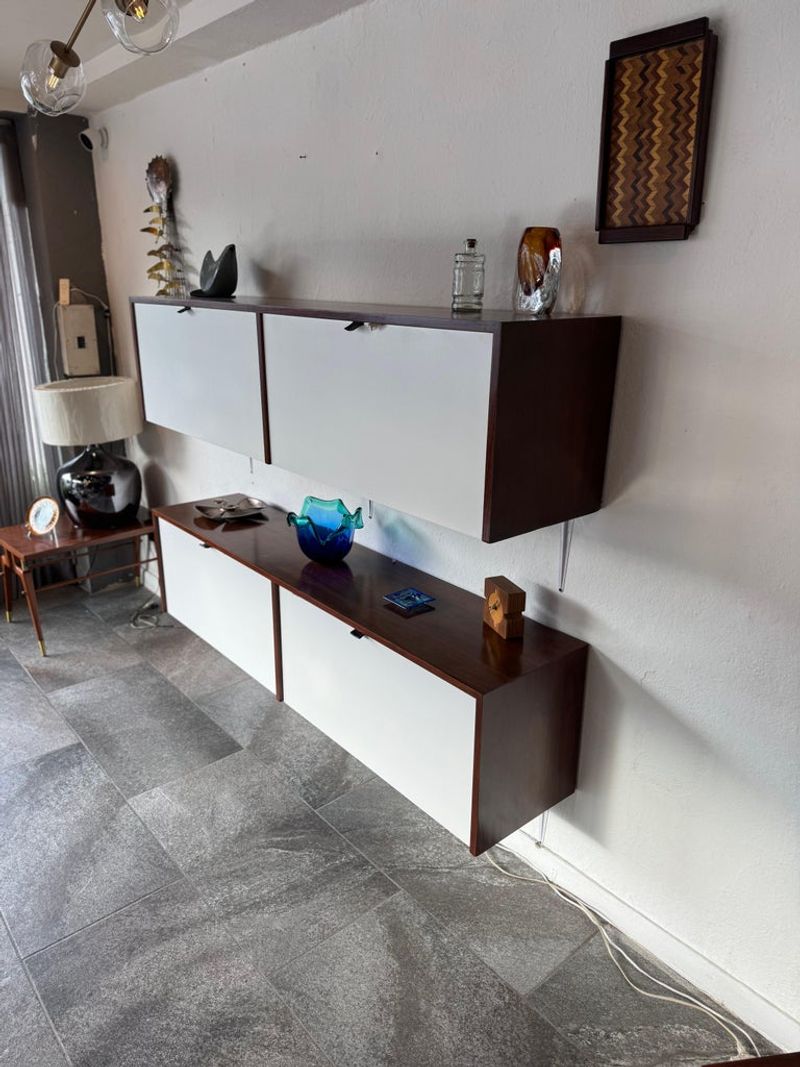
Wall-mounted storage units were revolutionary when they first appeared in 1950s living rooms. These floating wooden wonders seemed to defy gravity while keeping record players and fancy glassware safely stashed.
Crafted from warm woods like teak or walnut, these pieces often featured sliding doors with geometric patterns or colorful panels. The space underneath created an airy feeling that small rooms desperately needed.
Look at any modern Scandinavian-inspired interior today and you’ll spot these floating beauties still working their magic.
3. Kidney-Shaped Coffee Tables
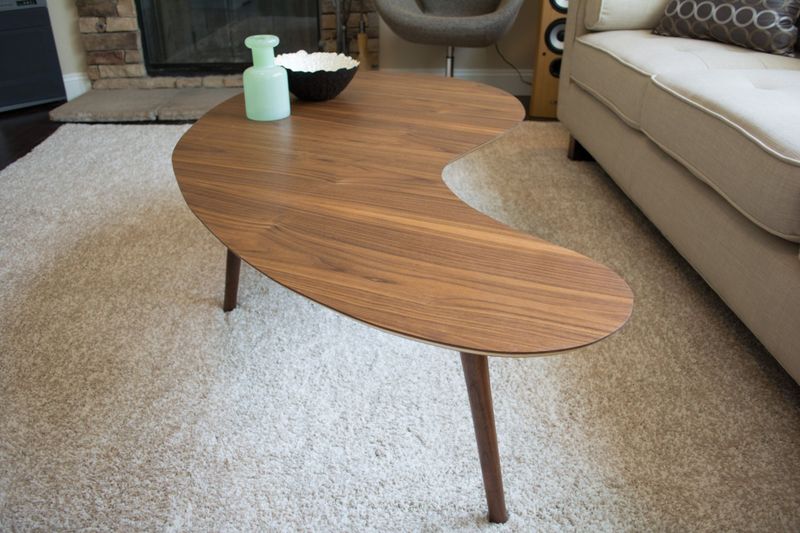
Nothing screams ’50s cool like a kidney-shaped coffee table! These curvaceous beauties broke away from boring rectangles and circles, introducing organic shapes that flowed with the room’s energy.
Usually standing on hairpin or peg legs, these tables often featured two levels – perfect for magazines below and your martini glass up top. The unusual shape allowed people to move around them more easily in tight spaces.
Contemporary designers have fallen back in love with these funky tables, proving that kidney is not just a bean but a timeless furniture statement.
4. Sputnik Light Fixtures
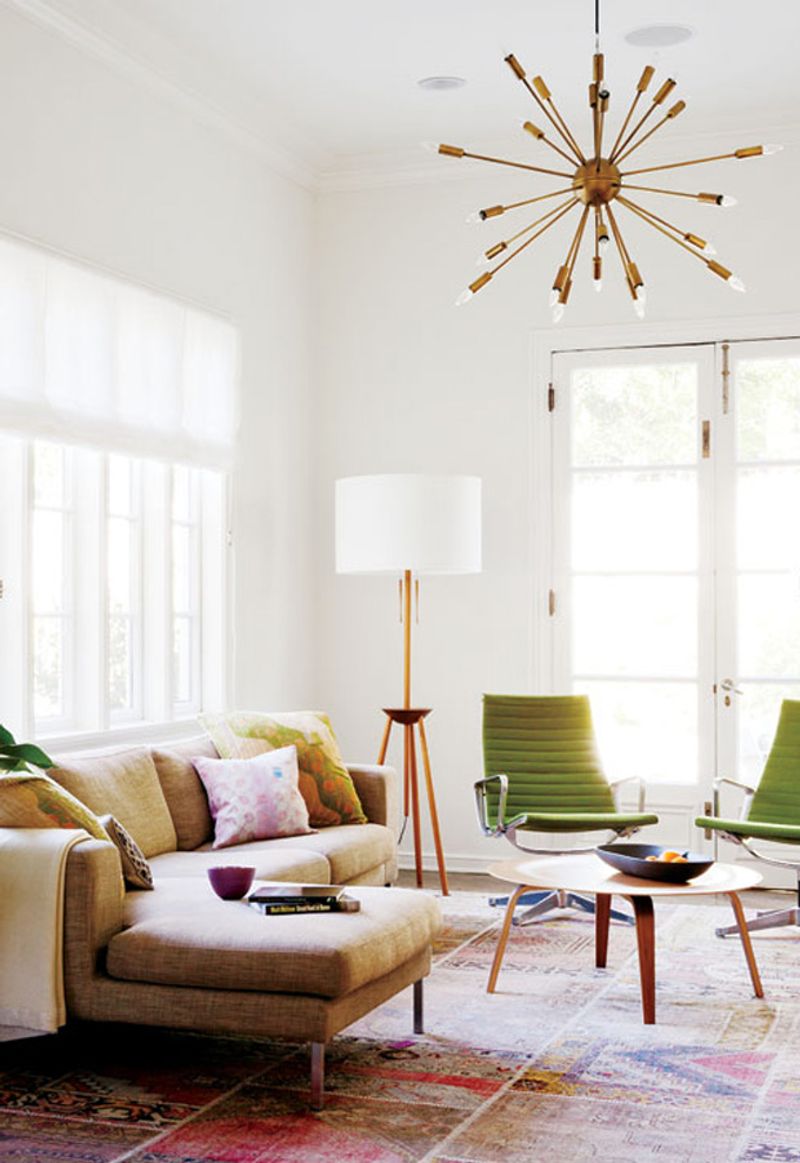
When the Soviet Union launched Sputnik in 1957, designers went wild creating star-burst lighting that mimicked the satellite’s spiky appearance. These dramatic fixtures dangled from ceilings like cosmic explosions frozen in time.
Made with brass arms radiating outward and bulbs at each tip, they cast fascinating shadows while making a bold statement. Some versions even incorporated colored glass or plastic elements for extra flair.
Walk into any trendy restaurant or boutique hotel lobby today and chances are you’ll spot modern versions of these space-age chandeliers lighting up the room.
5. Boomerang Patterns
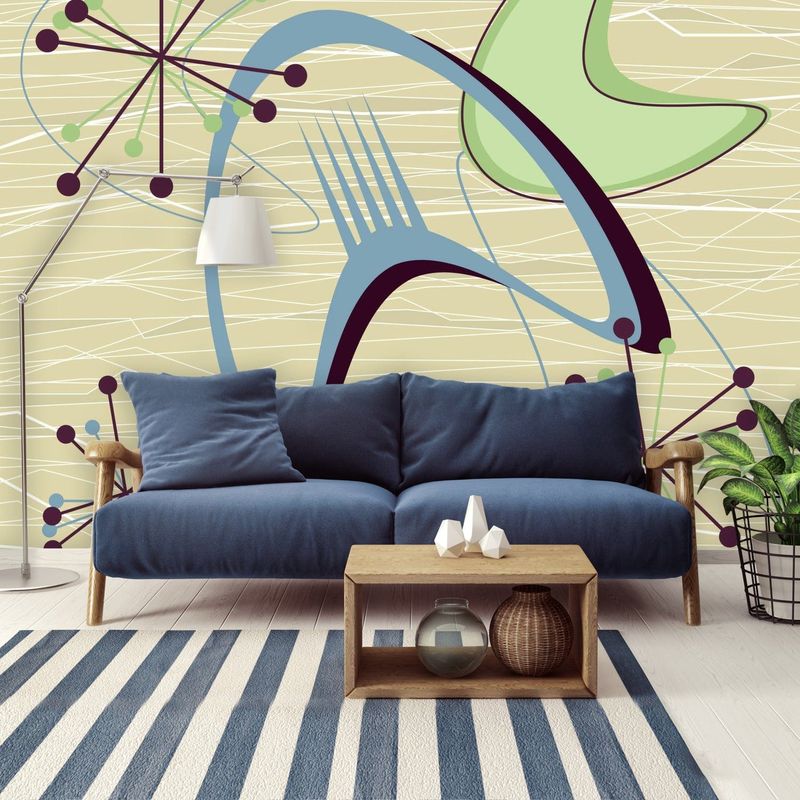
The boomerang pattern took 1950s homes by storm! This playful shape appeared on everything from coffee tables to curtains, adding movement and fun to otherwise simple rooms.
Fabric designers went especially wild with boomerangs, creating upholstery and drapes in bold color combinations like turquoise and orange or pink and brown. The asymmetrical shape perfectly captured the era’s fascination with all things dynamic and space-age.
Modern home goods stores now sell throwback boomerang-patterned items that fit surprisingly well with today’s geometric design trends.
6. Room Divider Screens
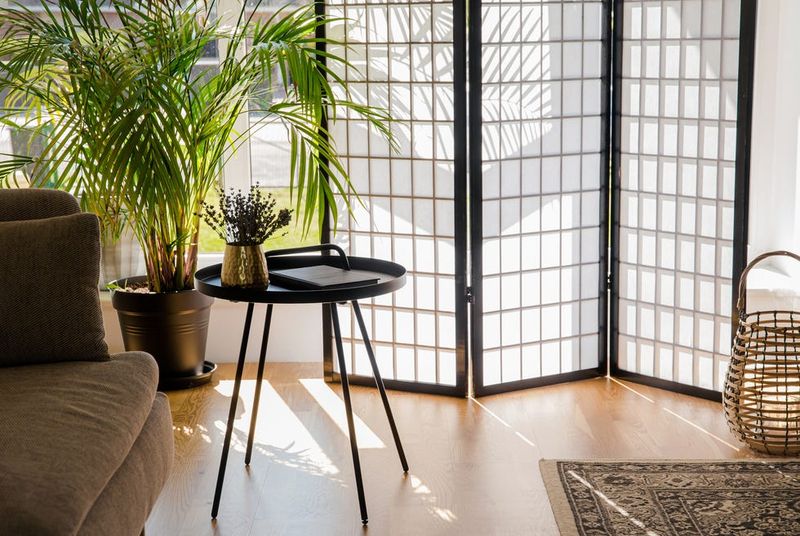
Before open floor plans became all the rage, 1950s homeowners used decorative screens to create flexible living spaces. These freestanding dividers could transform a room in seconds without permanent walls getting in the way.
Often made from wood frames with fabric, cane, or perforated panels, these screens let light pass through while defining separate areas. Some fancy versions even incorporated shelving or planters for greenery.
The concept has roared back into fashion as modern apartment dwellers seek ways to carve up their spaces without renovation permits!
7. Tapered Furniture Legs
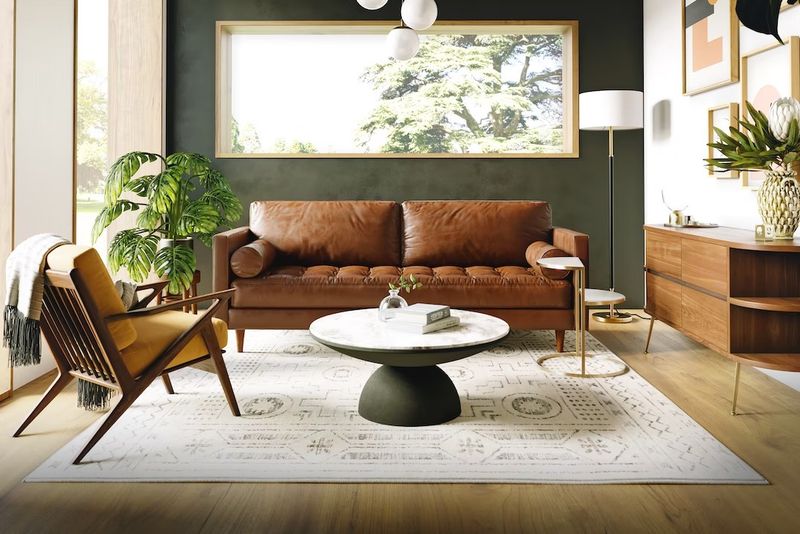
Skinny, angled legs made 1950s furniture look like it might prance away at any moment! These tapered wooden sticks, often capped with brass or rubber tips, supported sofas, chairs, and tables throughout the atomic age.
The genius was in how they elevated bulky pieces off the ground, creating a sense of lightness and movement. Cleaning underneath was a breeze compared to the heavy furniture from previous decades.
Check out any contemporary furniture store today and you’ll see these exact same legs supporting pricey sofas – proof that good design never really gets old!
8. Tension Pole Lamps
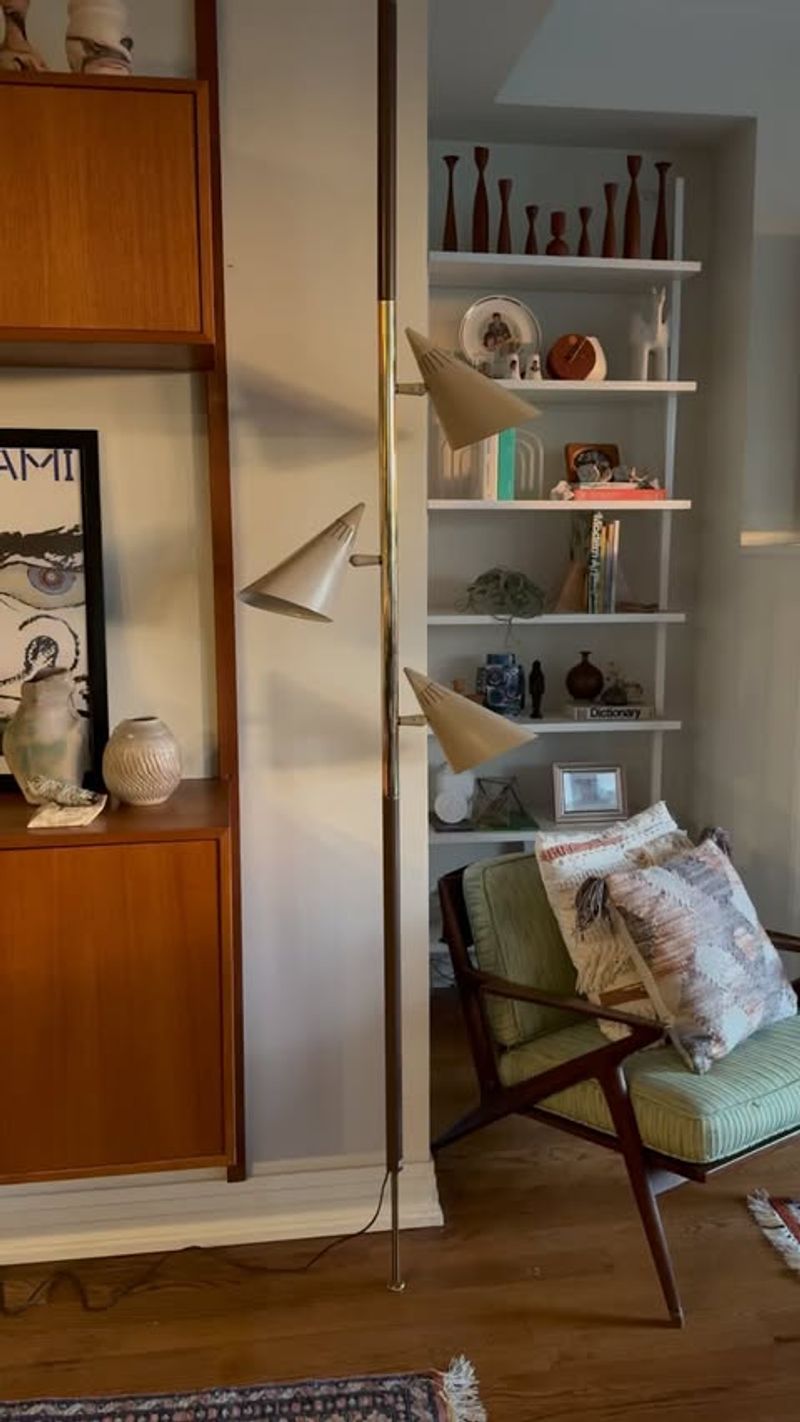
Talk about smart design! Tension pole lamps wedged themselves between floor and ceiling without drilling a single hole. These vertical wonders could be installed and removed in minutes, perfect for renters afraid of losing security deposits.
Featuring multiple adjustable light heads that swiveled in different directions, one lamp could illuminate an entire room. The poles came in wood, metal, or combinations of both with colorful shades adding personality.
Urban apartment dwellers have rediscovered these space-saving lights, with manufacturers churning out updated versions that look straight out of a 1955 catalog.
9. Atomic Starburst Clocks
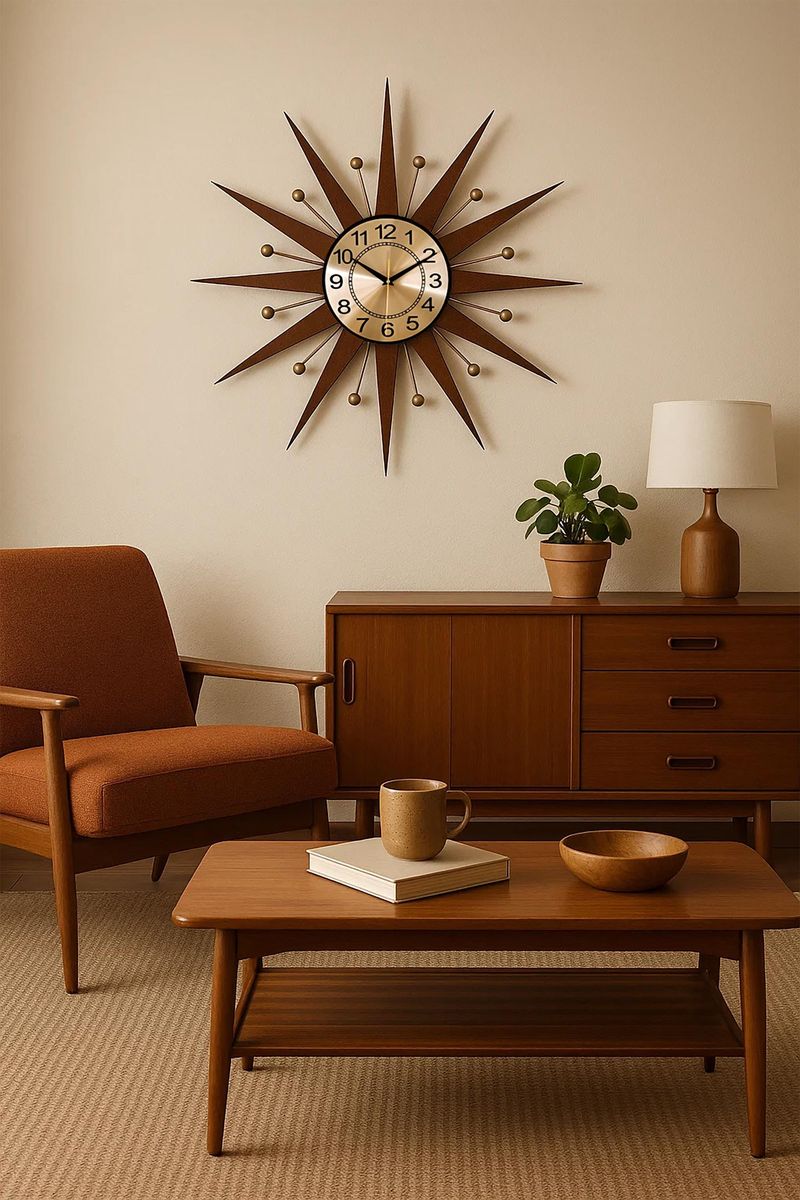
George Nelson’s iconic starburst clocks turned telling time into an art form! These wall-mounted showstoppers featured thin spokes radiating from a central clock face, resembling an explosion of energy frozen on your wall.
Made from wood, metal, or plastic in various colors, they became the must-have accessory for forward-thinking homeowners. Some designs incorporated elements like balls or diamonds at the end of each spoke for extra visual punch.
Reproductions of these space-age timepieces now sell for hundreds of dollars to style-conscious homeowners looking to add retro flair.
10. Terrazzo Flooring
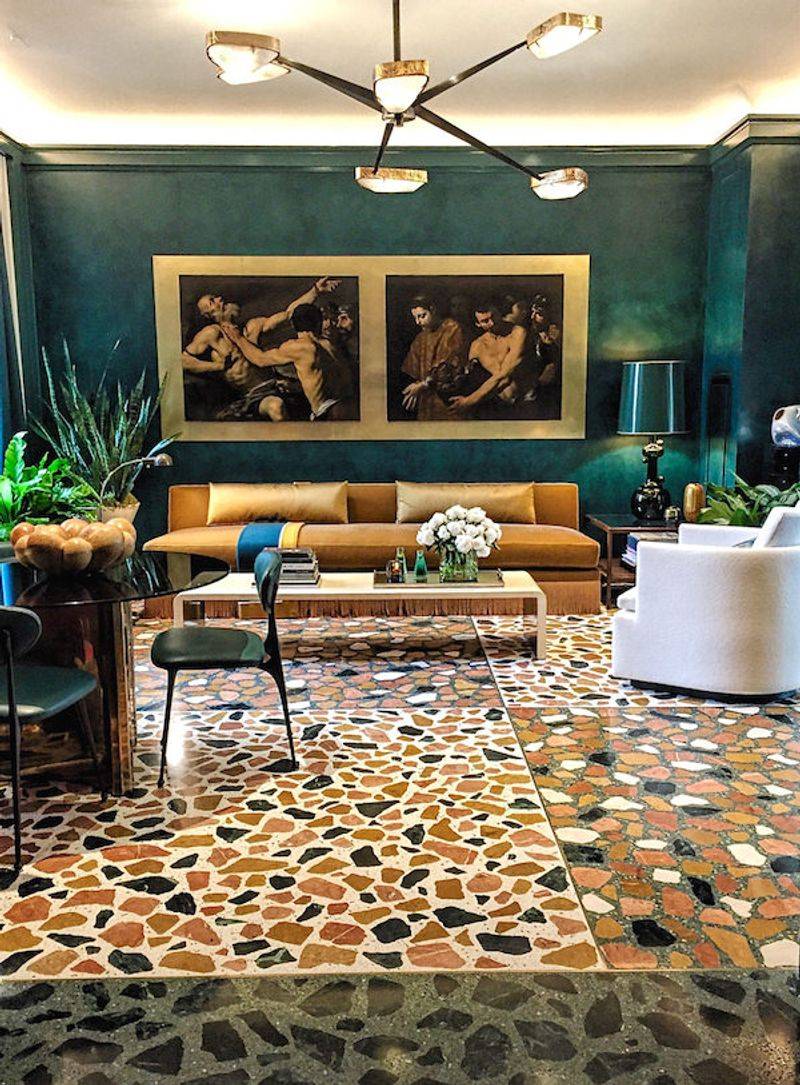
Chips of marble, quartz, and glass embedded in polished concrete created the speckled magic of terrazzo floors. This Italian-inspired surface brought playful confetti vibes to 1950s living rooms that were built to last forever.
Available in countless color combinations, terrazzo could be customized to complement any decor scheme. The smooth, seamless finish made cleaning a snap compared to fussy carpet or wood.
After decades of being hidden under shag carpeting, these durable floors are now being uncovered and celebrated by homeowners who appreciate both their durability and funky aesthetic.
11. Grasscloth Wall Coverings
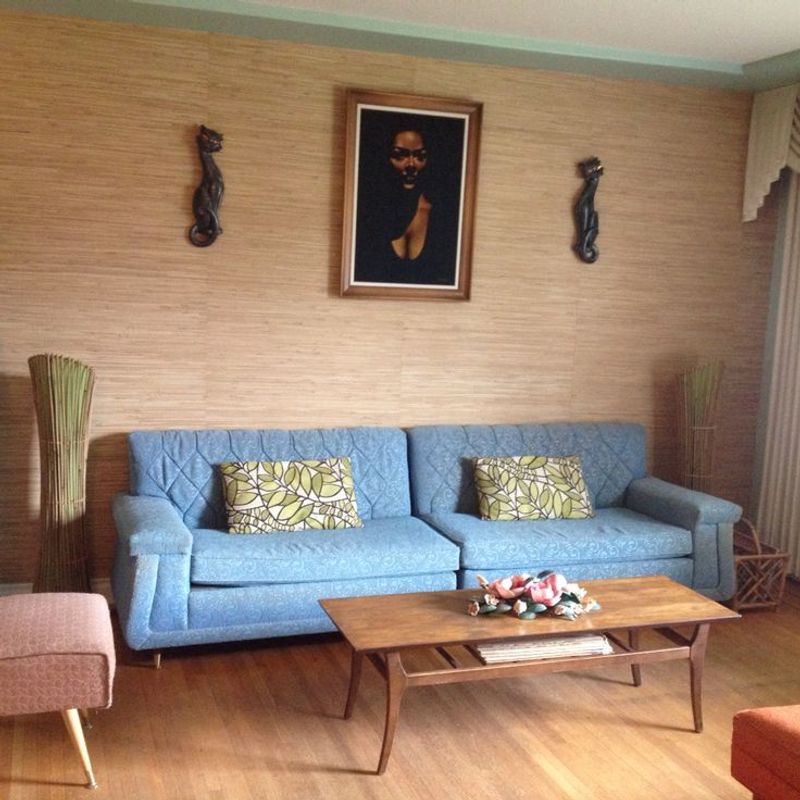
Natural fiber wallcoverings brought outdoor texture inside during the 1950s. Woven from actual dried grasses and reeds, these textural wall treatments added warmth to rooms dominated by sleek furniture.
The subtle color variations and visible seams gave walls an organic, handcrafted quality that contrasted beautifully with the era’s manufactured goods. Grasscloth created an earthy backdrop for abstract art and sculptural lamps.
Interior designers today charge premium prices to install this exact same material in luxury homes, proving nature never goes out of style.
12. Modular Seating Arrangements
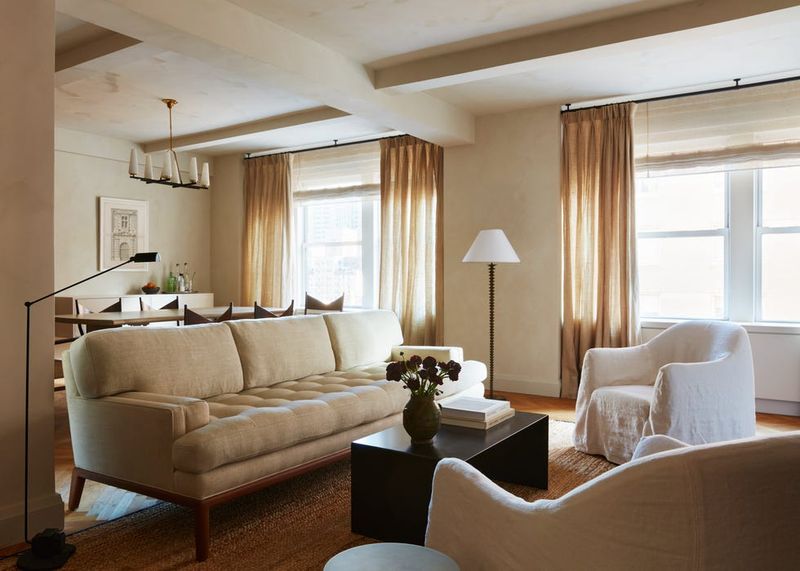
Furniture that could transform based on your needs? The 1950s nailed it with modular seating systems! These clever arrangements featured individual pieces that could be rearranged into different configurations.
Sectional sofas with interchangeable parts let homeowners create L-shapes, U-shapes, or straight lines depending on the occasion. Some even included built-in side tables or storage compartments.
Contemporary furniture companies have basically copied this exact concept with their “innovative” modular systems that follow the same principles pioneered 70 years ago.
13. Planter Room Dividers
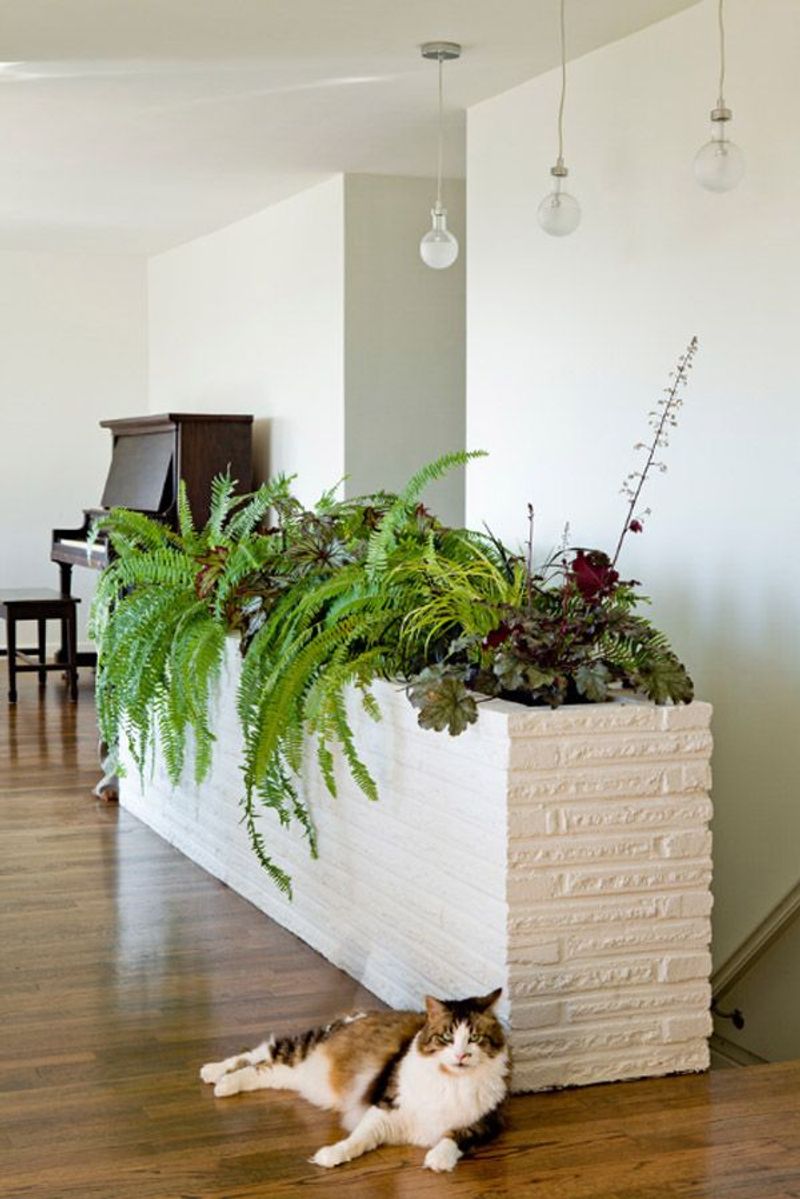
Bringing the outdoors in reached new heights with planter room dividers! These clever units combined storage, display space, and live greenery in one architectural element.
Typically constructed of wood with metal accents, these dividers featured open shelving with dedicated spots for potted plants. The greenery created natural privacy screens while improving air quality and adding life to the room.
Plant-obsessed millennials have sparked a massive revival of these functional dividers, with new versions appearing in design magazines and social media feeds regularly.
14. Abstract Area Rugs
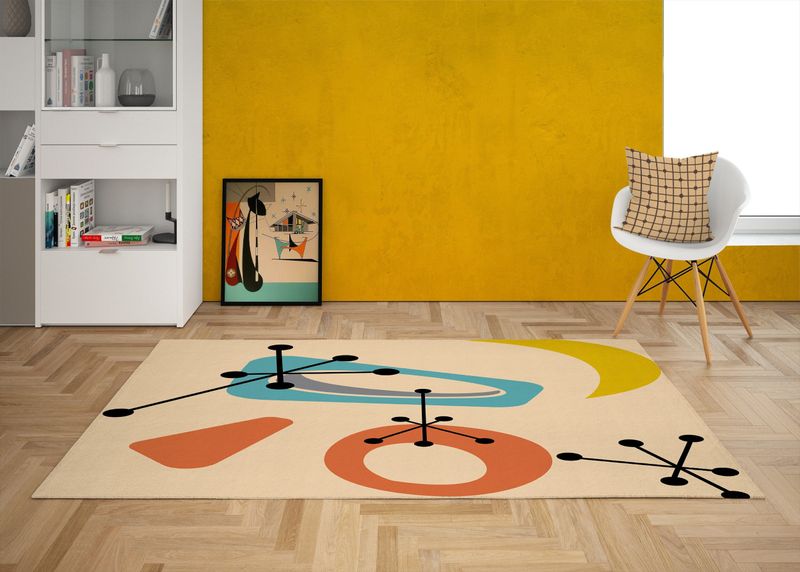
Floor coverings got a major artistic upgrade in the 1950s! Abstract rugs featuring irregular shapes, bold color blocks, and freeform patterns replaced traditional floral designs almost overnight.
Inspired by modern art movements, these rugs often incorporated asymmetrical designs in contrasting colors that energized the entire room. Materials ranged from wool to new synthetic fibers that promised easy cleaning and durability.
Contemporary rug designers are creating almost identical patterns today, sometimes at prices that would make your grandparents faint.
15. Floating Fireplaces
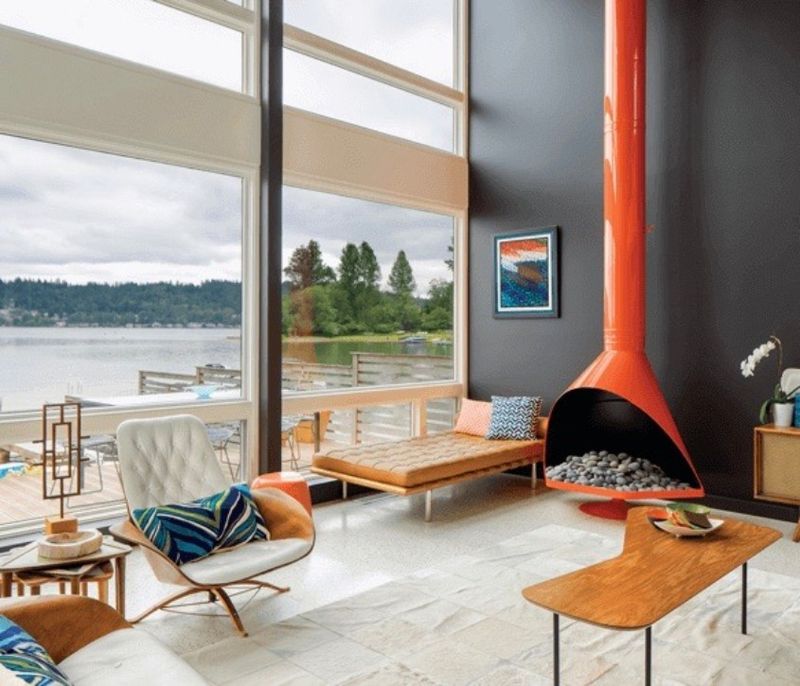
Fireplaces broke free from walls in the 1950s! These freestanding metal wonders could be placed anywhere in the room, creating a dramatic focal point that didn’t require major construction.
Often cone or orb-shaped with exposed flues stretching to the ceiling, these statement pieces came in bright colors like orange, white, or turquoise. The 360-degree design meant the fire could be enjoyed from any angle in the room.
Architects designing high-end modern homes now include similar standalone fireplaces, though they’re usually gas-powered rather than wood-burning.
16. Pegboard Storage Walls
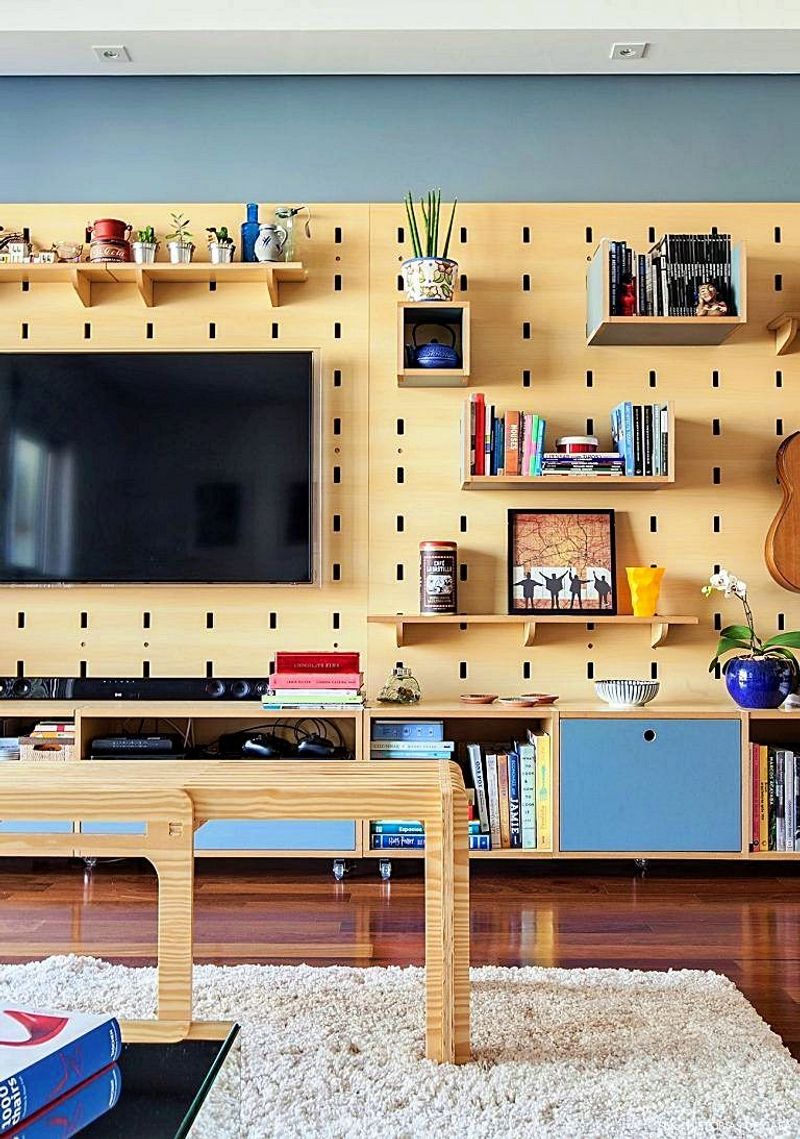
Perforated hardboard transformed entire walls into customizable storage systems! These practical panels could hold anything from books to knickknacks using simple hooks and specially designed shelves.
Homeowners loved how easily they could rearrange their displays without putting new holes in the walls. The grid pattern itself became a decorative element, especially when painted in bright colors contrasting with the items displayed.
DIY enthusiasts today create similar systems for modern homes, proving that smart storage solutions never really go out of fashion.
17. Two-Tone Color Blocking
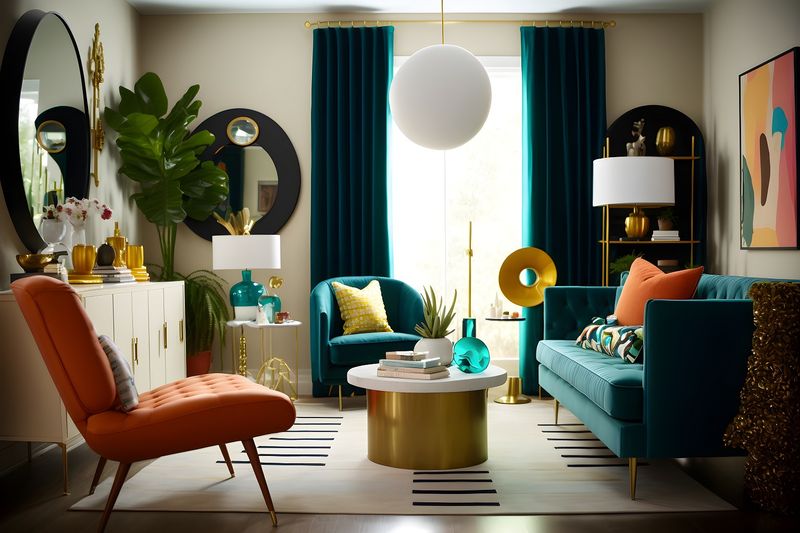
Bold color combinations made 1950s living rooms pop! Designers weren’t afraid to paint adjacent walls in completely different colors or divide a single wall horizontally with contrasting hues.
Popular pairings included turquoise with cream, charcoal with pink, or mustard with white. This technique created dynamic spaces without needing fancy furniture or expensive art.
Pinterest boards and design blogs now showcase these exact same color blocking techniques as fresh ideas for contemporary spaces, often without realizing they’re copying straight from grandma’s playbook.
18. Indoor-Outdoor Flow
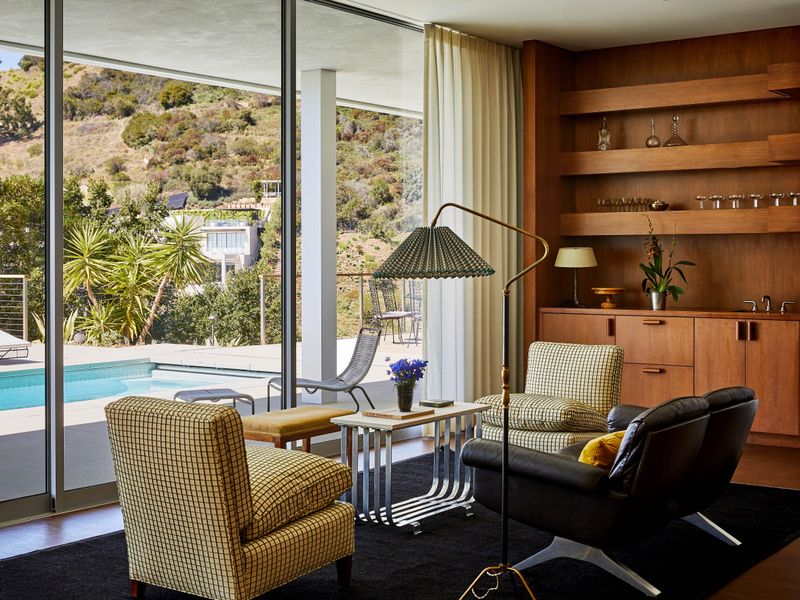
Blurring the line between inside and outside was revolutionary in post-war homes. Large sliding glass doors replaced solid walls, creating seamless transitions to patios and gardens.
Furniture arrangements acknowledged this new flow, with seating oriented to enjoy both interior comforts and exterior views. The same flooring material often continued from living room to patio, reinforcing the connection.
This concept forms the cornerstone of today’s most desirable home designs, with architects still working to perfect the indoor-outdoor relationship pioneered during the atomic age.

